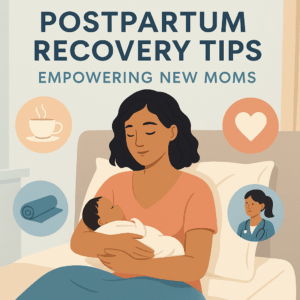All About Breast Health

Did you know that breast cancer is one of the most common kinds of cancer in women? About 1 in 8 women in the United States will get breast cancer at some point in their lives. Many women can survive breast cancer if it’s detected early and treated right away. That’s why it’s so important to know what’s normal for your body so you can be aware of any changes.
In honor of Breast Cancer Awareness Month, we’re doing just that: increasing awareness for breast cancer and breast health. We’ve put together some essential facts about breast health: what’s normal, when to see a doctor, and some changes you might see after pregnancy or with age.
Know your normal
Understand what’s normal for your breasts by doing regular self-exams and paying attention to any changes. Just like you should be aware of new moles or changes in your skin, you should also be on the lookout for changes with your breasts.
You might worry that your breasts look “weird” or abnormal. However, many of these worries are not that unusual: other women experience them, too! It’s totally normal if your breasts are slightly different in size, shaped slightly differently, have hair around your nipples, or if they feel tender or ache before and during your period.
After age 40, your breasts will experience some physical changes. As you near menopause, your breasts may lose fat and tissue, and become smaller. They may sag more or feel lumpy. These are benign changes caused by normal aging. During menopause, your breast tissue becomes less dense and more fatty. You may not experience tenderness or lumps that you did during your menstrual cycles.
Breast changes during and after pregnancy
It’s also normal for your breasts to experience changes when you get pregnant. Your breasts may get larger and more tender. Your nipples may darken in color, and blood vessels may become more visible. Lumps and fluid-filled sacs, or cysts, can also form or become larger during pregnancy. That’s because your milk-producing glands are getting larger and increasing in number in preparation for your baby.
Whether you decide to breastfeed your baby or not, your breasts will likely swell and begin to produce milk a few days after you give birth. Your breasts may feel hard and very tender. Breastfeeding can help relieve the pain and swelling, as well as wearing a supportive bra or applying warm or cold compresses.
How to perform a breast self-exam
While no single test can detect all forms of breast cancer early, routine self-exams along with other screening methods like mammograms may increase the odds of early detection. Try to perform a self-exam once a month.
In front of a mirror
Visually inspect your breasts when standing in front of the mirror. Look at them with your arms hanging naturally. Put your hands on your hips, and raise your arms above your head. Check for any changes in size, shape, and color. Look for any bulging, puckering, or dimpling of your skin. Check if your nipples have changed position, have inverted, or if they’re experiencing discharge (fluid that is not breast milk.) Look for any redness, swelling, rashes, or soreness.
In the shower
Many women find it easier to check for physical changes when their skin is wet, so it’s easier to do this part of the self-exam in the shower. Using the pads of your fingers, check the entire breast and armpit area in a circular pattern. Move from the outside of your breast to the center. Feel each breast for any lumps, thickened areas, or hard knots. Use light, medium, and hard levels of pressure.
Lying down
Using the same technique above, feel for any physical changes when you’re lying down and your breast tissue is spread out evenly along your chest.
If you find a lump
Don’t panic if you find a lump; 8 out of 10 lumps are not cancerous. Many women have lumps or lumpy areas in their breasts all the time. Lumps can also commonly pop up before or during your period because of hormonal changes. If this is the case, you may want to wait until your period ends to see if the lump disappears on its own before calling your doctor.
Talk to your doctor
The best way to be aware of your breast health is to understand what’s normal for your body, be on the lookout for changes, and have regular health exams with your doctor. Your doctor can look for breast changes during clinical breast exams and mammograms. During a clinical exam, your doctor will check your breasts, nipples, and underarm areas for abnormalities. Using an x-ray picture, a mammogram can check for changes in your breasts that may be too small for you or your doctor to feel physically.
You can also discuss with your doctor at what age and how often you should have clinical breast exams and mammograms. Be sure to share your personal medical history and family medical history with your doctor, too.



